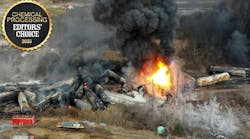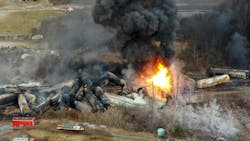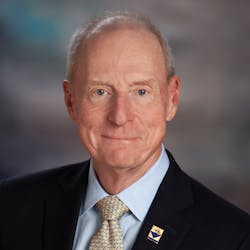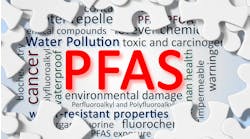Could New Chemistries, Retooled Production Strategies Prevent the Next East Palestine Spill?
CP editors picked this story as one the top articles for 2023. To view all of our Editors' Choice picks for the year, visit https://chemicalprocessing.com/33016377.
UPDATED: May 17, 2023
On March 9, senators on the Environment and Public Works Committee grilled Norfolk Southern CEO Alan Shaw over his company’s involvement in the East Palestine, Ohio, Feb. 3 train derailment and chemical spill. During his testimony, Shaw discussed steps Norfolk Southern would take to improve safety, including improvements to early-warning sensors and the development of a digital train inspection program. He also talked about partnering with other railroads to review best practices.
Absent from his testimony was reference to chemical suppliers and efforts to partner with the industry to safely distribute chemicals. The suppliers are not subject to liability because transportation providers accept responsibility for ensuring the materials arrive at their destination safely, says attorney Mark Steger, senior counsel with Clark Hill.
“It’s really the railroad’s liability; the railroad’s fault,” he says. The only exception would be if the chemical suppliers were grossly negligent in some way, he adds.
Still, the chemical industry has committed to ensuring the safe delivery of materials by working with suppliers, distributors and transportation companies through the American Chemistry Council’s (ACC) Responsible Care initiative. ACC issued a statement following the Senate testimony saying, “Rail safety is a shared responsibility. Safety initiatives and regulations must address the entire safety equation, which includes preventing derailments, avoiding releases and supporting emergency response.”
ACC President and CEO Chris Jahn added that the organization wants to work with policymakers and transportation partners to apply the lessons learned from the incident. What those efforts entail remains to be seen. Some green-chemistry advocates say the industry can avoid future public health and environmental disasters by developing safer products. But even proponents of material substitution acknowledge that new formulations can take decades to develop and mass produce.
More practical solutions in the near term may include closer oversight of logistics partners’ safety practices and new supply chain strategies that minimize shipping distances for hazardous materials.
Audit Transportation Partners
The rail industry has faced harsh criticism for fighting various safety regulations, including modern braking systems and stronger tank cars for explosives. The chemical industry needs to fill the gaps when standards are lacking, says Trish Kerin, director of IChemE Safety Centre.
“While Responsible Care is a voluntary program, it is in place to help industry manage their hazards, especially where the legislative framework may not have kept up,” says Kerin, who also co-hosts Chemical Processing’s “Process Safety With Trish & Traci” podcast. “[While] the legislative requirements may have decreased, as owners of the products being transported, industry should be ensuring the risk has not increased and demanding suitable controls are implemented because they have ownership of the risk from cradle to grave.”
This includes auditing logistics providers and their vehicles to ensure they meet safety requirements for moving hazardous materials, she says. In addition, the transportation company needs to understand the unique characteristics of the chemicals they’re carrying and their reactive properties while in transit, Kerin says.
“For example, a product that is static in a tank at a site may not pose a high risk, but once it starts sloshing in a moving vessel the agitation may present different risks,” she explains.
Chemical suppliers also should know the maintenance practices of their logistics partners and be familiar with key safety features on the vehicle, such as a train’s braking system, to understand whether it can handle an emergency situation, Kerin says. A National Transportation Safety Board (NTSB) investigation revealed that an overheated bearing played a role in the East Palestine derailment. NTSB also is investigating aluminum protective housing covers used on three of the vinyl chloride tank cars that derailed in East Palestine.
Find Safer, Sustainable Alternatives
Some academics and industry experts say the East Palestine spill should encourage a shift in manufacturing practices throughout the sector. On Feb. 25, an opinion column in Scientific American by three sustainable chemistry advocates suggested the disastrous outcomes in East Palestine could have been avoided had the chemical industry developed safer, more eco-friendly chemicals. According to the authors, many current chemistries date back to the pre-1960s and haven’t kept pace with today’s safety regulations.
“We keep making dangerous chemistries and shipping them around the country and world,” says Joel Tickner, a professor of environmental health at the University of Massachusetts Lowell. Tickner, one of the authors of the Scientific American column, leads a research institute at UMass Lowell called Sustainable Chemistry Catalyst. He says the entire value chain bears some responsibility when chemical spills occur.
“In the end, it comes back to the chemistry – if the chemistry is less hazardous, it becomes less dangerous in the event of an incident,” he tells Chemical Processing. “We built our modern materials economy on chemicals that worked really well and were optimized for costs and performance and not low hazards. Vinyl chloride is a known human carcinogen used to make a low cost-high demand plastic PVC.”
Vinyl chloride is the primary chemical of concern in the East Palestine spill. It’s the main ingredient in PVC production, the plastic piping commonly found in plumbing and construction applications. Vinyl chloride exposure can cause a variety of health effects, including dizziness, drowsiness and headaches from short-term contact and more serious effects, including liver cancer, from long-term exposure.
But many of the properties that make certain chemistries hazardous are the same thing that make them useful in a variety of applications and building blocks for other materials, says Scott Jensen, ACC’s director of issue communications. “For many critical uses, no suitable substitutes can provide the same measure of safety and performance,” he says.
Finding a Viable Replacement
Swapping one chemical for another comes with inherent challenges. William Carroll, an adjunct professor in the chemistry department at Indiana University, shared his thoughts on the topic with Chemical Processing. Carroll retired from Occidental Chemical Corp. in 2015 after 37 years and now leads his own company, Carroll Applied Science. Here is an abbreviated version of that conversation, which has been edited for space and clarity.Can an alternative material meet wide-scale use?
Let’s say you wanted to try to replace ethylene in its various uses. Well, there are very few, two-carbon hydrocarbons with a double bond other than ethylene. That’s a basic chemical property that allows you to make polyethylene and turn it into virtually every other polymer. There's just [no substitute material] you can grab off the shelf to drop in for it. And that's where it gets to be difficult.
Is it safer, more effective?
I was chair of the Green Chemistry Institute Advisory Board at ACS for three years, and our mantra, like the OECD (Organization for Economic Co-operation and Development) mantra, was efficient, effective, safe and benign. And if you're talking about making substitutions that don't touch those four things, then you're substitute chemistry isn't going to get used. If it costs way more — and I’m not saying it has to cost less — if it doesn't do the job, if it's not markedly safer than what you're using and, also relatively safe in the environment, then it's just not going to succeed.
Where does substitution make sense?
If you start at the small end of the chemistry enterprise, very specialty things (such as pharmaceuticals or fine chemicals) that have very elaborate synthesis, then in many cases you have lots of choices of reagents, and you can look at those reagents and decide which of those are safer and still work for your operation. This is why, to me, the biggest (opportunity) for green chemistry is in the pharmaceutical industry, and they have embraced this in terms of solvent choices, reagent choices, [and] designing new reactions. [At] the other end of the spectrum, where you're talking about commodity chemicals, it gets extraordinarily more difficult. When you talk to these manufacturers, you discover they've taken this chemical material that has also different physical properties and handling properties and mechanical properties, and they've developed their own technology. So, the way my product handles may be totally different from the way somebody else's product handles. And as a result, is not an easy drop-in for that customer.
Bring Production Closer to Customers
Even if chemical manufacturers say product substitution isn’t feasible, the fallout from the East Palestine spill could spur major changes across the industry supply chain.
Most vinyl chloride production occurs along the U.S. Gulf Coast, where producers benefit from access to cheap natural gas, which they convert to ethylene, notes Bill Bowen, senior markets editor at ICIS. Vinyl chloride producers could see their cost advantage take a hit, though, if legislators impose additional safety regulations on the rail industry. The costs to comply would likely get passed on to the company shipping the chemicals and their customers.
Also, the tank cars on rail lines are owned by the chemical company shipping the product, Bowen says. “So we may also see further regulatory steps and costs for the shippers themselves,” he adds.
To combat higher costs and safety risks, raw material producers may begin building smaller, modular plants closer to their customers as alternatives to the giant complexes along the coast, Bowen says.
“This specific incident in Ohio has highlighted the dangers of chlorine-derived chemicals, which carry particular dangers for workers at manufacturing facilities and in chemical transportation, or for residents near a chemical spill or accidental release,” he explains. “Because of this, the idea of modular chlor-alkali manufacturing facilities has been popular – a small and relatively inexpensive production facility built next to the user of chlorine. Although this idea has been discussed for a long time now, so far, it has not gained traction. This could change.”
However, Jensen says chemical producers serve a diverse range of product needs, so moving next door to customers isn’t always practical. He notes that chemicals are needed everywhere – from farms to the business and communities that consume them.
Build Fully Integrated Facilities
Until safer materials are available, manufacturers that use dangerous chemicals in their products should produce them in house, say green-chemistry proponents. The primary application for vinyl chloride is PVC, so it makes sense to only produce it at sites that also manufacture PVC, says Eric Beckman, co-director of the Mascaro Center for Sustainable Innovation at the University of Pittsburgh’s department of chemical engineering. This way, chemical producers would only make the amount of vinyl chloride they need and immediately convert it into PVC, he says. Beckman refers to this approach as “resilient design.”
“In traditional design we try to prevent bad things from happening,” he explains. “In resilient design, we assume that bad things happen, even if rarely, and we try to design the system so that havoc does not ensue. Thus, traditional design would have us spend a lot of energy creating rail cars with double walls or triple walls, while resilient design assumes failure or leaks but tries to minimize subsequent damage, hence, onsite, on-demand VC (vinyl chloride) use rather than rail shipments.”
Tickner agrees, saying that integrated facilities would be a first step to lowering hazardous exposure but cautions that in the long term, the industry needs to identify new polymers that “don’t rely on a carcinogenic building block.”





